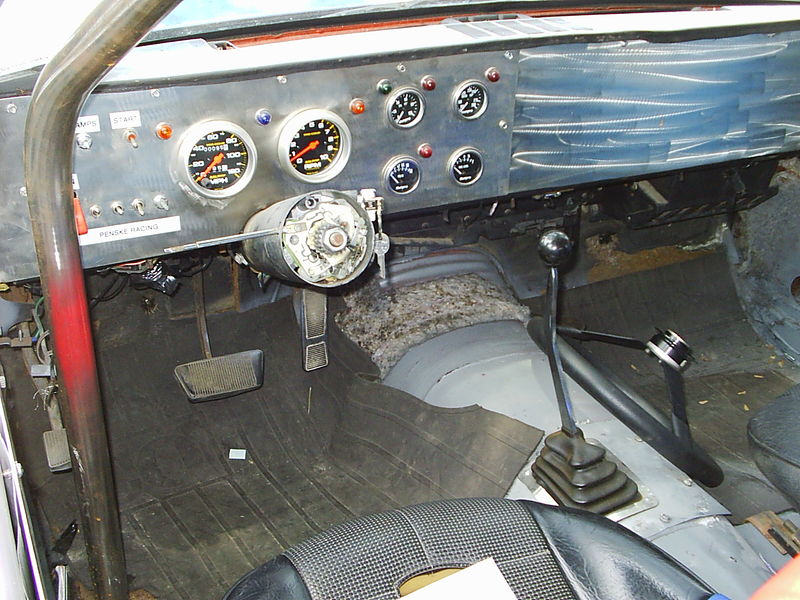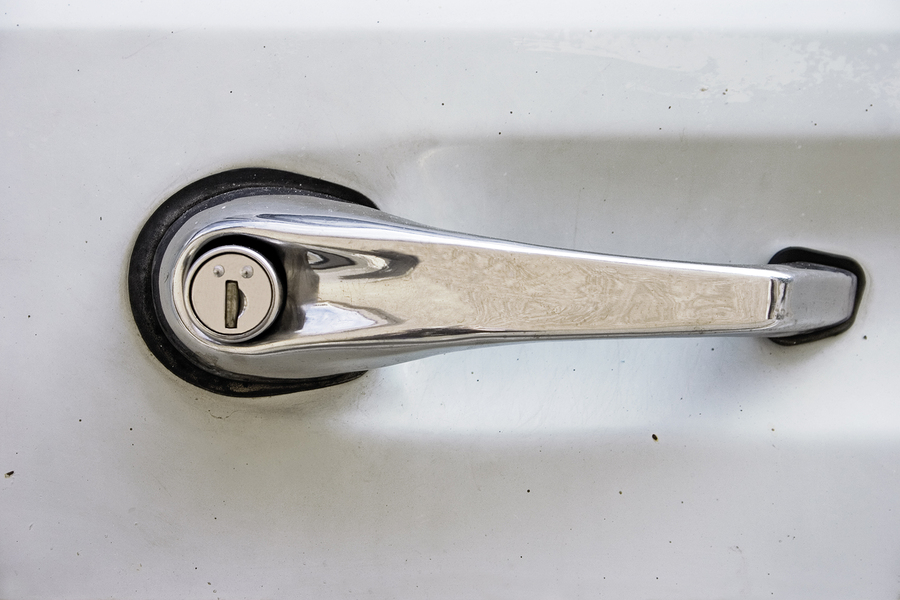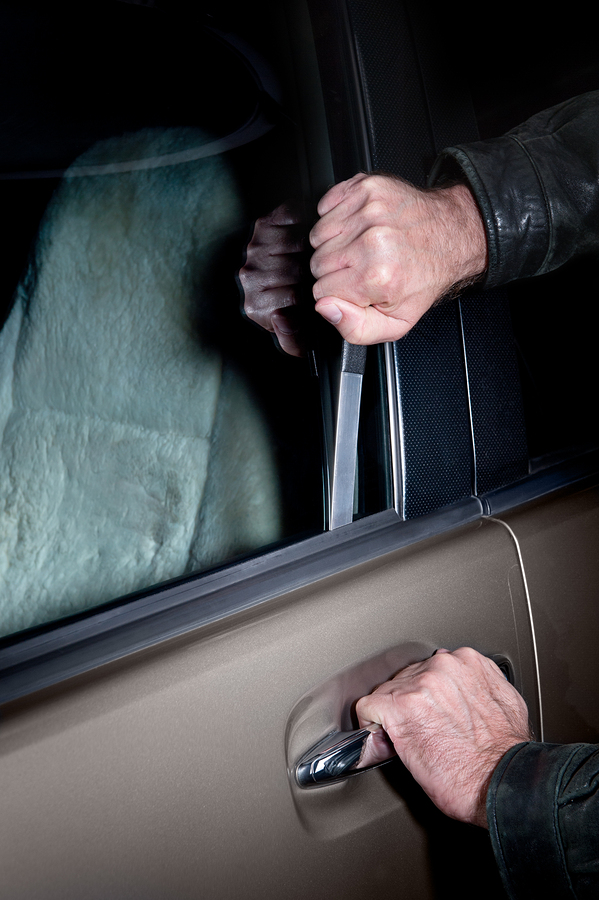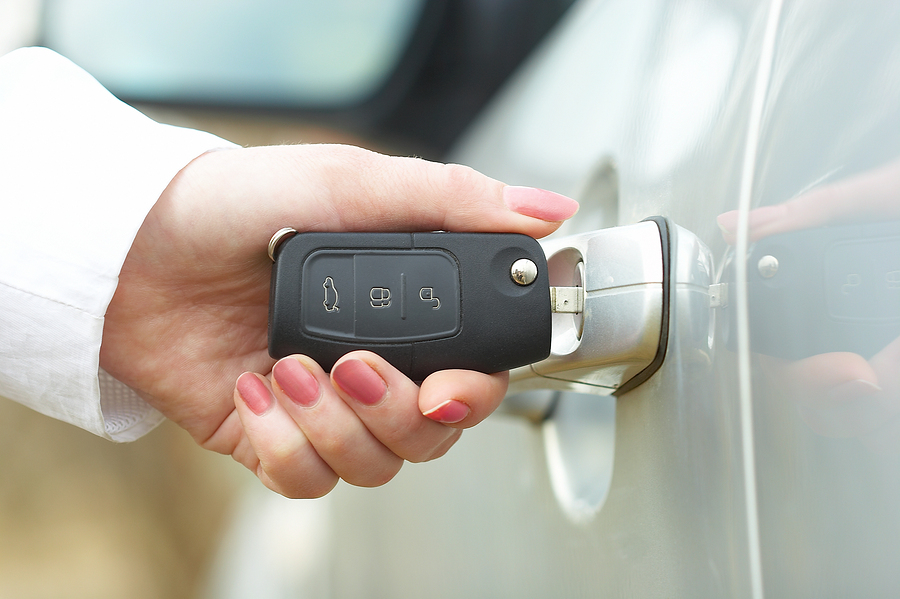When it comes to car security, things used to be much simpler. Many of the earliest automobiles were not locked at all as they were primarily owned by the very wealthy who could afford a driver who stayed with the vehicle at all times. Other security systems were almost equally as simplistic; the 1900 Leach auto was designed with a removable steering wheel so that the driver could simply remove and carry it with him to prevent the theft of his automobile. Other manufacturers adopted this idea. Here is a 1974 AMC Matador with a quick release steering wheel.

As time went on, however, it became apparent that cars would need a little more security. As automobiles became more common, more vehicles were left unattended, placing them at risk for theft, or at least the theft of items left inside the vehicle. Since then, the quest to create the most secure vehicle has continued, today with more modern electronically-engineered locking systems.

Lock Cylinders
Door locks are housed in cylinders. The metal cylinder is mounted inside the door and contains whatever locking system the manufacturer utilized, such as a wafer lock or a pin tumbler system. Regardless of what system the lock contained, most cars up until the 1970s contained the lock code on the outside of the cylinder. This allowed a new key to be created based on the same codes. Because many vehicles used the same key for the door and the ignition, creating a key for the door resulted in the ability to also start the ignition.
Obviously, gaining access to the lock cylinder of a car is not something that can be done quickly in a parking lot, but it is a way for a thief to gain access to a vehicle if he can first get the car door open. Once the car door is open, the cylinder is relatively easy to remove. This is the main reason why many car manufacturers switched to separate keys for door and ignition.
Types of Locks
Although the type of lock on car doors has changed through the years, all the early locks were mechanical rather than electronic. Manufacturers would use a certain type of key blank which could be cut to fit any lock in their lines of cars. Two main types of locks have been utilized:
Pin Tumbler – This lock has metal pins of various sizes within the lock cylinder. To open the lock, a key with the proper height of cuts must be inserted in order to raise all the pins to the correct level for turning.
Wafer Tumbler – Quite similar to the pin tumbler, this lock utilizes flat, one-piece wafers of different sizes. Again, the proper key pushes the wafers into place, allowing the lock to be turned.
Both pin tumblers and wafer tumblers can be easily picked if a person has access to the right tools. Pick sets and instructions are abundant on the Internet, but in the early days, it was a bit more difficult to gain access to the tools as well as the know-how to utilize them.
However, bumping is a much easier way to gain access to such locks. A key is used that is similar to the proper key (a blank for that particular make of car) but that has been cut to the deepest possible depths. The key is inserted, and then some sort of tool such as a screwdriver or hammer is used to bump the key, forcing the pins in the lock to create a space to turn. Bumping is much easier to master than picking.
The Slim Jim
Cars manufactured before 1992 can often be opened with a tool called a Slim Jim. Many locksmiths have these and can help people who have locked their keys in their cars. Some individuals attempt to do this on their own, but it can cause expensive damage to the door if the person does not know where the working parts for the lock are. Newer cars often have a Slim Jim plate, preventing such access, and the doors are filled with wires, airbags, and other objects that can be greatly damaged by any attempt to open your car door with a hanger or other device.

The Electronic Age
Most new cars have electronic locks. Although many still also have a keyed lock, number pads and key fobs are often used to electronically open the door locks. Many keys are designed with computer chips inside, preventing a duplicated or fake key from gaining access. Due to the complicated nature of today’s locks, locksmiths must undergo specialized training in order to keep up with the ever-changing world of electronic locks.

http://www.britannica.com/

 We serve the entire Phoenix area, including
We serve the entire Phoenix area, including  We accept Cash, Checks and Major Credit Cards.
We accept Cash, Checks and Major Credit Cards.
By Yasmin September 26, 2014 - 7:01 am
You share interesting things here. I think that your
website can go viral easily, but you must give it initial boost and i know how
to do it, just type in google for – wcnu traffic increase
By Gary March 4, 2020 - 6:04 am
Great Blog !! technology really changed the security methods !!